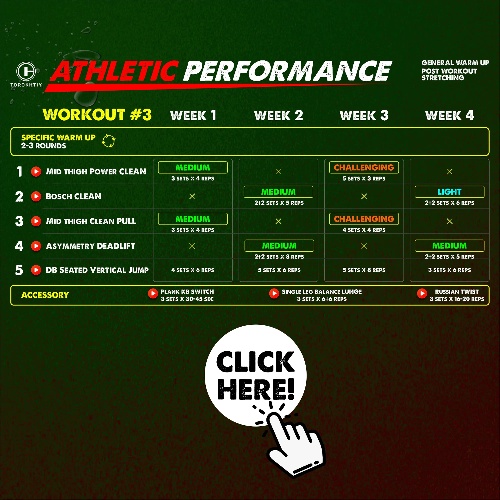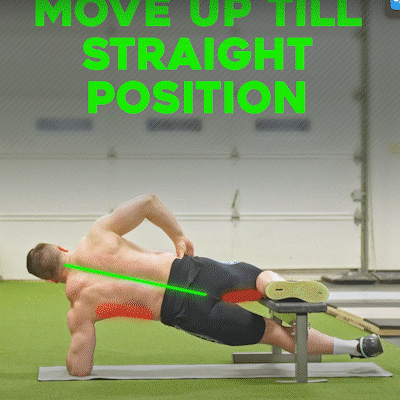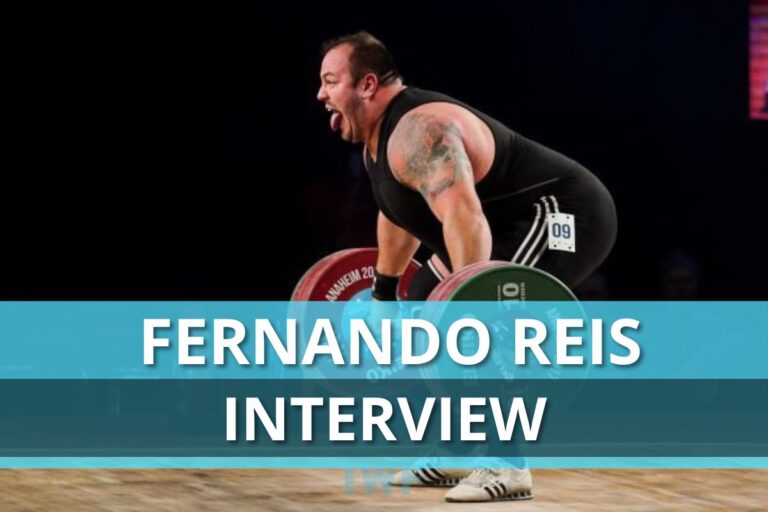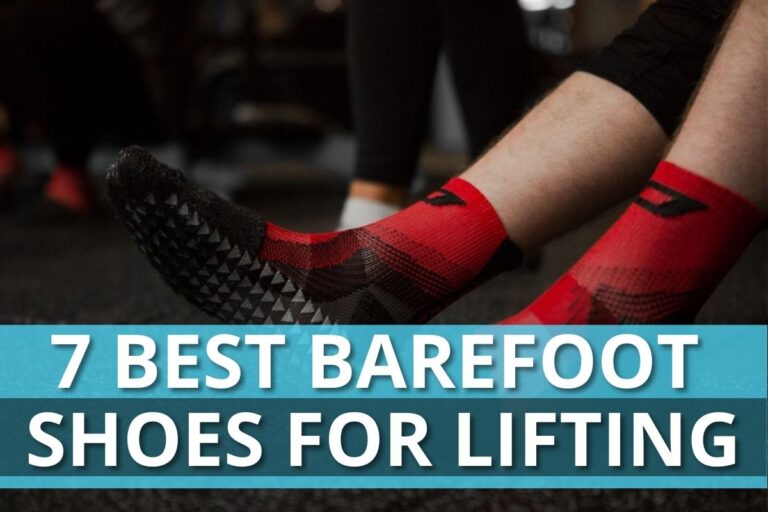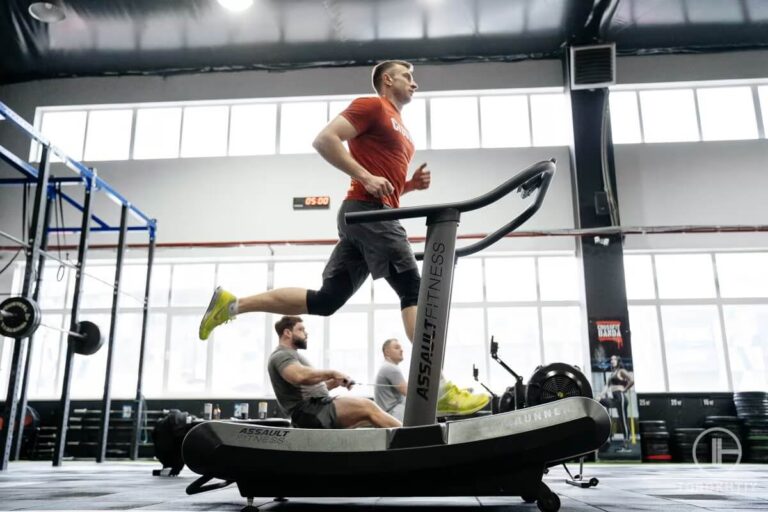Strength Training for Sprinters (Detailed Program)
Reviewed by: Oleksiy Torokhtiy (21 years of Oly Lifting experience)
Lifting for sprinters is an essential component of their training regimen. Including weight training in your workout routine can have a positive impact on your overall fitness and performance as a sprinter. Here’s all you need to know about it to take your performance to the next level.
Lifting for sprinters should be a crucial part of their training routine. Whether you’re a professional athlete or a beginner, incorporating weight training will increase stride length and explosiveness and reduce the risk of injury. It dramatically improves the speed, strength, and overall performance of a sprinter.
What’s Strength Training for Sprinters?
Sprinter weight training consists of many exercises that will build strength, power, and endurance in the muscles used during sprinting. The muscles used here are mainly the quadriceps, hamstrings, glutes, calves, and core muscles.
These exercises can be performed using free weights, machines, or bodyweight to target the intended muscle groups.
Incorporating such exercises into your workout routine can help increase the amount of force produced with each stride, making you faster and more explosive. Because you’re strengthening these muscles, you’re drastically reducing the risk of injury and increasing the stability of your joints and muscles.
There are many exercises that can be included in a sprinter’s weight training program. Here are some common examples:
- Squats
- Deadlifts
- Lunges
- Calf raises
- Planks
- Russian twists
Please note that it is essential for a sprinter to work with a coach or trainer to construct a weight training program that caters to their needs and goals.
All in all, weight training for sprinters is of high importance. Its incorporation will lead to improved performance on the track through increased strength, power, explosiveness, and endurance.
Benefits of Strength Training For Sprinters
Talking about the benefits of strength training for sprinters, there’s a lot to cover. Strength training offers a range of benefits that can improve performance on the track for a sprinter.
It is a vital part of a sprinter’s training regimen as it helps build muscle mass, improve power, explosiveness, and speed, and reduce the risk of injury. Furthermore, strength training can help increase overall fitness levels, improve body composition, and make you feel more confident about yourself.
Irrespective of where you are in your fitness journey right now as a sprinter, incorporating strength training exercises into your routine can help you reach your sprinting goals. So, let’s take a look at some of the main benefits for sprinters who also train their muscles.
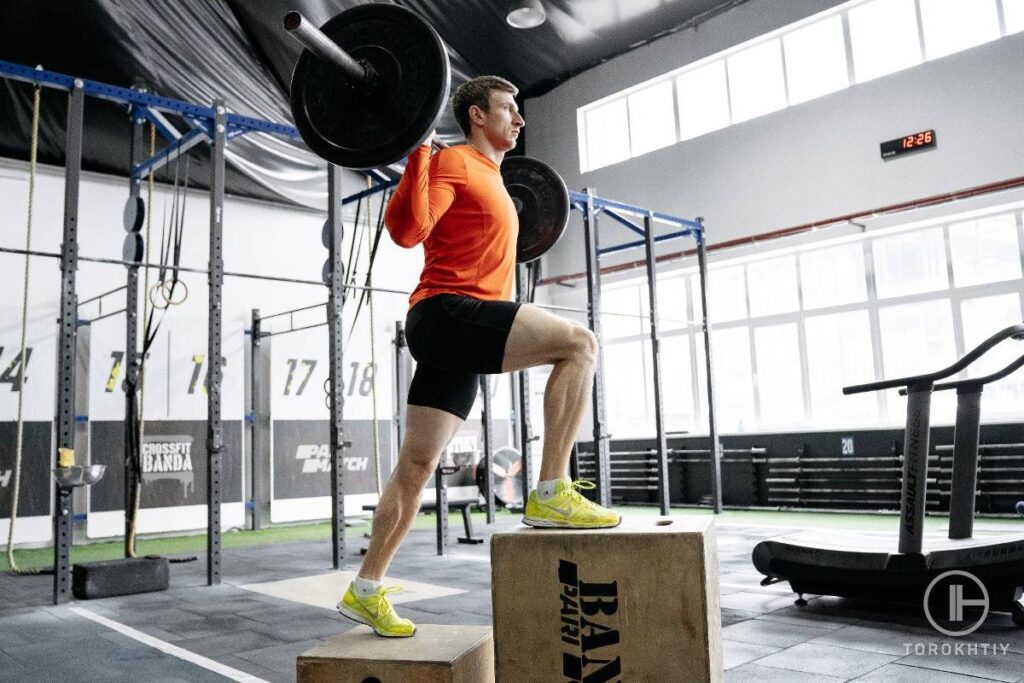
Enhances Athletic Performance
The biggest reason why strength training for sprinting is so crucial is that it enhances athletic performance. Sprinting requires the coordination of various muscle groups and joints, and that’s where strength training comes in.
It helps improve the strength, power, and coordination of these muscles and joints. By improving muscular strength and power, sprinters can increase their speed and improve their stride frequency and length.
Reduces Risk of Injury
Not only does strength training improve athletic performance, but it also helps prevent injuries by improving the stability of the joints, such as the ankles, knees, and hips. These are also the joints that are put to use while sprinting.
Because the risk of injury is reduced, it helps sprinters maintain a consistent training regimen. Overall, incorporating strength training into a sprinter’s training program is essential for enhancing performance on the track, preventing injury, and achieving their full potential.
Increases Muscle Mass and Strength
One of the most significant benefits of strength training, not just for sprinters but for anybody, is that it greatly helps increase muscle mass and strength. For sprinters, muscle mass and strength matter all the more.
That’s because sprinting requires a significant amount of power to generate maximum force with each stride. Strength training helps develop the necessary muscular strength to do so.
It promotes muscle hypertrophy, which, in simpler words, is the growth of muscle fibers. It leads to increased muscle mass and overall strength. By increasing the amount of force that the muscles can produce, sprinters can enhance their stride length and frequency. All in all, it improves their sprint speed.
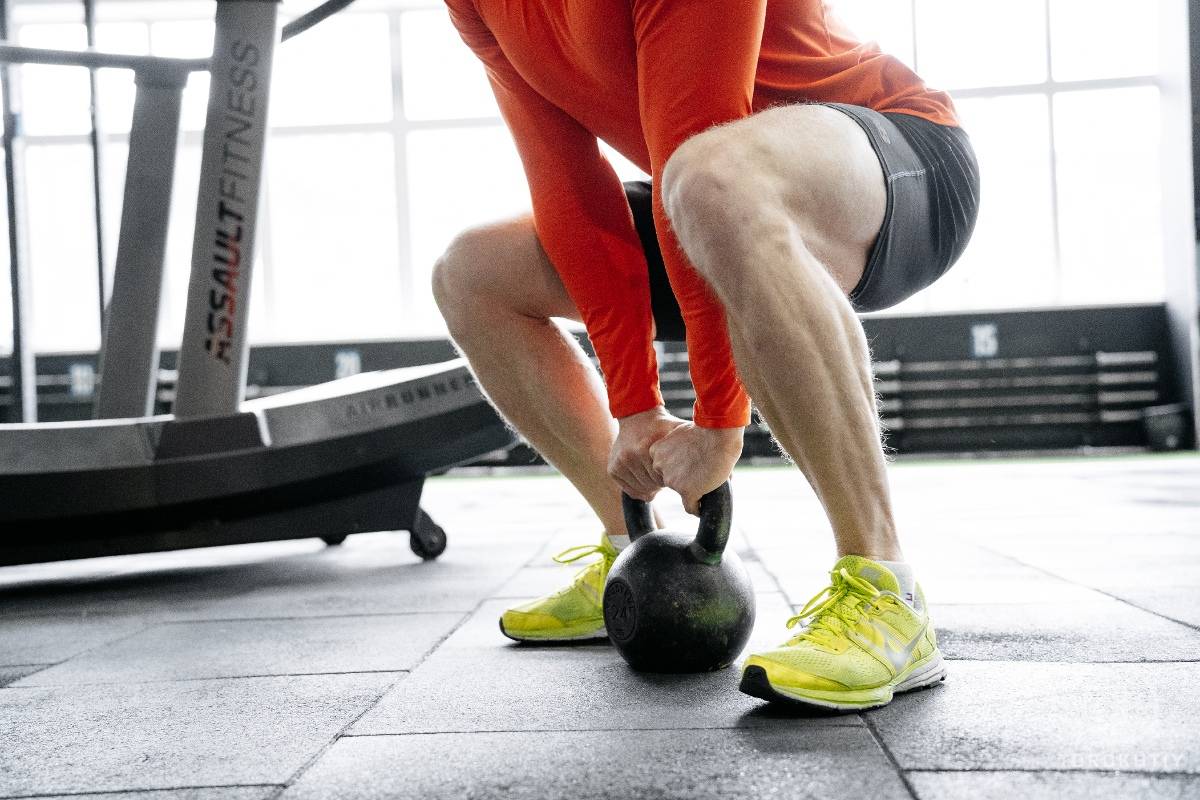
Improves Bone Density
An added benefit of strength training is that it also improves bone density. Sprinting is a relatively high-impact physical activity that places a considerable amount of stress on the bones.
As we age, our bone density reduces, and even sprinting over can lead to a loss of bone density and an increased risk of fractures. By incorporating strength training exercises such as squats, deadlifts, and lunges, sprinters can stimulate bone growth and increase bone density. Even weight workout for sprinter 50 year-olds can significantly benefit from it.
Additionally, increased bone density can reduce the risk of osteoporosis. It is a condition that weakens bones and increases the risk of fractures.
Boosts Metabolism
Strength training for sprinters, or anybody for that matter, is a highly effective way to boost metabolism and promote fat loss. It helps put on lean muscle mass, which requires more energy to maintain than fat tissue.
As a result, the body’s metabolism increases, which helps burn more calories even when at rest.
It can also help prevent muscle loss during weight loss, which can lead to a decrease in metabolic rate. Making strength training a part of your training regimen as a sprinter can help you achieve your weight loss and performance goals.
Improves Overall Health and Well-Being
Weight training has been shown to have numerous health benefits, including improving cardiovascular health, reducing the risk of chronic diseases, such as diabetes and heart disease, and enhancing mental health by reducing stress and improving the mood of a person.
Including strength training exercises into a sprinter’s training regimen can have positive effects on both their physical and mental well-being, leading to a more balanced and healthy life.
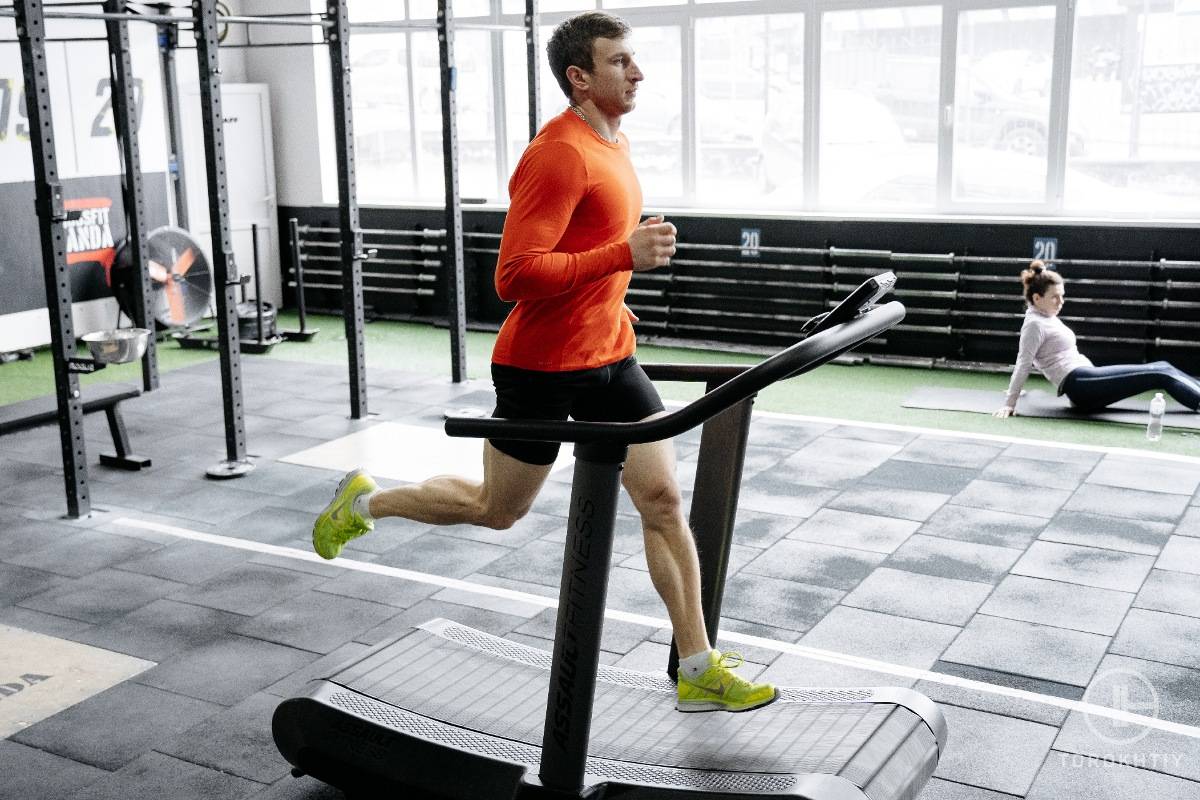
Strength Training Exercises for Sprinters
Lifts for sprinters improve the explosive power, speed, and overall strength required for sprinting. These exercises typically target the lower body muscles, including the quads, hamstrings, glutes, and calves, while also engaging the core and upper body to create a balanced and efficient stride. Let’s take a look at some strength training exercises for sprinters
Squats
Squats are an effective way to build lower body strength, which is crucial for sprinting. Stronger leg muscles can generate more power and speed during each stride. Squats also help develop explosive power and joint stability, particularly in the knees and hips, which are crucial for sprinting.
The squat is one of the best compound exercises for a sprinter that can improve overall athletic performance, including speed, power, and agility.
Deadlifts
Deadlifts are a compound exercise that targets the hamstrings, glutes, lower back, and core. It can help strengthen the muscles in the posterior chain, including the hamstrings and glutes, which are vital for sprinting. This increased strength can lead to more power and speed during each stride.
It strengthens the lower back and core, which helps maintain proper posture and alignment while sprinting.
Lunges
Lunges are a unilateral exercise that targets the quadriceps, hamstrings, glutes, and core, which are essential for sprinting. Lunges can help improve balance and stability, as it is an exercise that requires control and balance, which can improve your running mechanics.
Lunges can help increase hip mobility, which is necessary for proper running form. It can help improve muscle endurance and lower body strength, which will increase the power and speed during each stride.
Core Exercises
A strong core is essential for maintaining proper posture, balance, and alignment while sprinting. Core exercises can help improve posture and alignment, which can lead to more efficient and effective running mechanics.
A strong core can help improve stability and balance, which is essential for sprinting. This can help prevent injuries and improve overall running performance. It will also improve power and speed by providing a solid foundation for generating force during each stride.
Plyometric
Plyometric exercises involve explosive movements that can help improve power, speed, and explosiveness. These exercises can improve explosiveness by training the muscles to generate force quickly and efficiently. Plyometric exercises can also help improve joint stability in the knees and ankles.
Key Factors in Sprinters’ Strength Training Routine
Let’s take a look at the critical factors in a sprinter’s strength training routine.
Building Speed and Explosiveness
For sprinters, it is crucial to put a lot of focus on the exercises that will help them build explosiveness and speed because it will improve their overall performance.
Lower Body Strength
The lower body does most of the job while sprinting, which is why it is essential for a sprinter to work on lower body strength. The best way to do that is to target the lower body muscles with adequate strength training.
Neuromuscular Coordination and Muscular Elasticity
There needs to be a balance in the strength training routine of a sprinter, which is why one must not forget about upper body and core strengthening, as it too plays a vital role in improving overall performance.
Rest, Recovery, and Nutrition
Lastly, the body needs adequate nutrition and rest to recover from all the physical activity and come back fresher and stronger in the next training session. That’s the only way to support muscle growth and improve your performance as an athlete.
Sprinters Strength Training Programming
Here is a sample strength training program for sprinters:
- Warm-up: dynamic stretching and foam rolling
- Squats: 3-4 sets of 6-8 reps with heavy weight
- Deadlifts: 3-4 sets of 6-8 reps with heavy weight
- Plyometrics: box jumps, hurdle hops, or bounding exercises, 2-3 sets of 6-8 reps
- Lunges: 2-3 sets of 10-12 reps per leg
- Leg press: 3 sets of 10-12 reps
- Calf raises: 3 sets of 10-12 reps
- Core exercises: planks, sit-ups, or Russian twists, 3 sets of 15-20 reps
- Cool down: static stretching and foam rolling
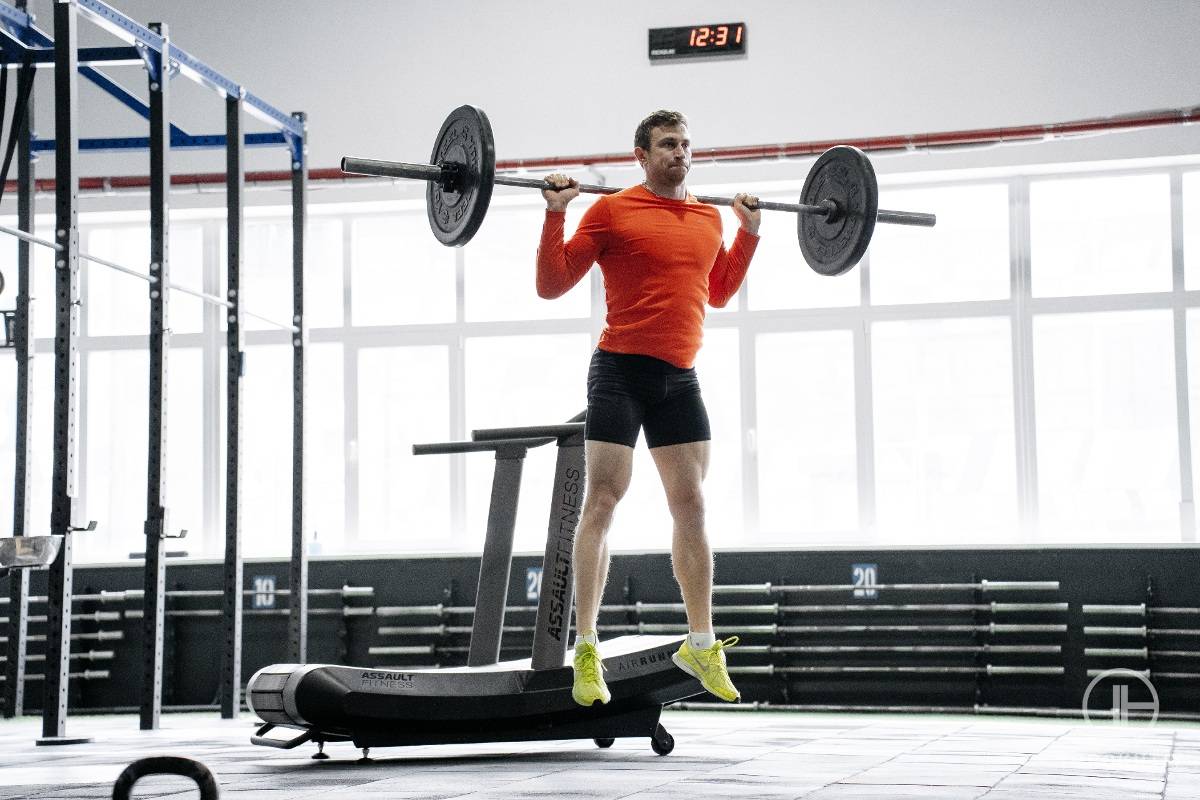
Basic Equipment Needed
It’s best if this program is performed in a gym because a basic gym would have all the pieces of equipment required for this program. Anyways, here are the basic equipment needed for this program:
- Barbell and weight plates
- Leg press machine
- Plyometric boxes
- Dumbbells or kettlebells
- Yoga mat
- Foam roller
Please note that it is important to ensure the good condition of equipment to reduce the risk of injury.
FAQ
What Lifts Are Best for Sprinters?
The best lifts for sprinters are those that focus on developing explosive power and speed in the lower body while also engaging the core and upper body. Some of the best exercises are squats, deadlifts, lunges, box jumps, hurdle hops, leg presses, calf raises, planks, and Russian twists.
Does Weightlifting Help Sprinters?
Yes. It helps sprinters build explosive power and speed, while also improving overall strength and endurance. Weightlifting for sprinters can also help reduce the risk of injury by strengthening the muscles and joints involved in sprinting.
How Often Should a Sprinter Lift Weights?
It depends on several factors, including the athlete’s training goals, current fitness level, and competition schedule. For most sprinters, weightlifting should be performed two to three times per week, with at least one day of rest in between sessions to allow for recovery and muscle repair. It’s best to work with a qualified trainer to design a program that is tailored to individual needs and goals.
Conclusion
Strength training will improve various aspects of your sprinting performance, such as power, speed, stability, and injury prevention. All you need to do is follow a well-rounded lifting program that focuses on the exercises that can help sprinters reach their full potential on the track. Do you have any other weightlifting tips for sprinters? If yes, let us know in the comment section.
Also read:
- Strength Training for Football
- Strength Training for Basketball
- Strength Training for Baseball Players
- Strength Training for Wrestlers
- Tennis Weight Training Program
- Strength Training for Rowers
- Exercises for Canoeing
- Strength Training for Swimmers
References:
- Weightlifting for Sprinters: Why You Need to Get Strong // Stack: https://www.stack.com/a/weight-lifting-for-sprinters-why-you-need-to-get-strong/
- THE BENEFITS OF STRENGTH TRAINING FOR RUNNERS // Pure Physio: https://pure-physio.com/the-benefits-of-strength-training-for-runners
- Strength for Sprinting – Connecting Gym Gains with Sprinting Performance // Aths Coach: https://www.aths.coach/resources/strength-for-sprinting-connecting-gym-gains-with-sprinting-performance
Why Trust Us?
With over 20 years in Olympic Weightlifting, our team does its best to provide the audience with ultimate support and meet the needs and requirements of advanced athletes and professional lifters, as well as people who strive to open new opportunities and develop their physical capabilities with us.
By trusting the recommendations of our certified experts in coaching, nutrition, dietology, and sports training programming, as well as scientific consultants, and physiotherapists, we provide you with thorough, well-considered, and scientifically proven content. All the information given in the articles concerning workout programming, separate exercises, and athletic performance, in general, is based on verified data. We ensure that you can rely on our professionals’ pieces of advice and recommendations that can be treated as personalized ones which will benefit you and fully meet your needs.
The product testing process is described in more detail here
Author: Sergii Putsov
Head of Sport Science, PhD
Best Results: Snatch – 165 kg,
C&J – 200 kg
Sergii Putsov, Ph.D., is a former professional weightlifter and National team member, achieving multiple medals in the 94 kg weight category at national competitions. With a Master’s degree in “Olympic & Professional Sport Training” and a Sport Science Ph.D. from the International Olympic Academy, Greece, Sergii now leads as the Head of Sport Science. He specializes in designing training programs, writing insightful blog articles, providing live commentary at international weightlifting events, and conducting educational seminars worldwide alongside Olympic weightlifting expert Oleksiy Torokhtiy.
Reviewed by: Oleksiy Torokhtiy
Olympic Weightlifting Champion
Best Results: Snatch – 200 kg,
C&J – 240 kg
Oleksiy Torokhtiy is a professional athlete boasting 20 years of experience in Olympic weightlifting. With multiple European and World titles under his belt, he has showcased his prowess in two Olympic Games (Beijing 2008 and London 2012). Upon concluding his illustrious career, Oleksiy dedicated himself to coaching. By 2022, he had conducted over 200 weightlifting seminars worldwide. He is the visionary behind an international sportswear and accessories brand known for its motto, “Warm Body Cold Mind.” Additionally, he is an esteemed author and the creator of a series of training programs and eBooks.

